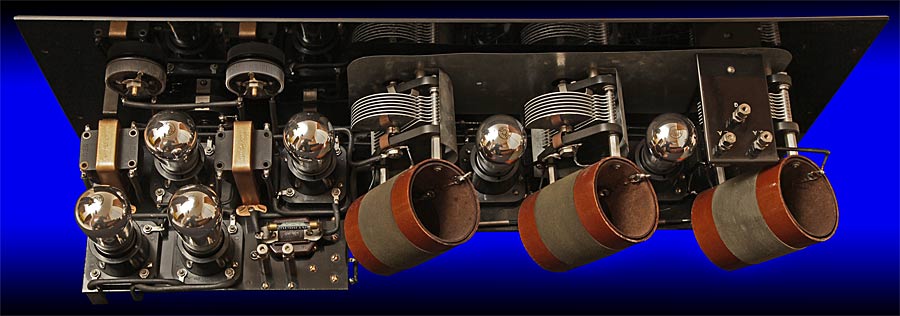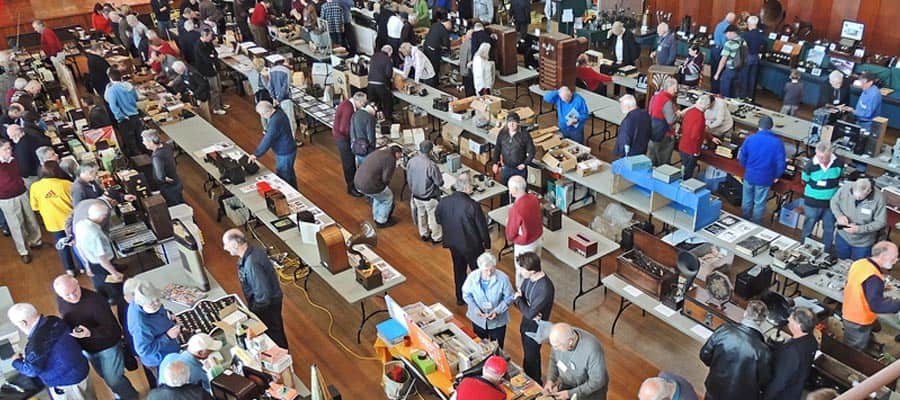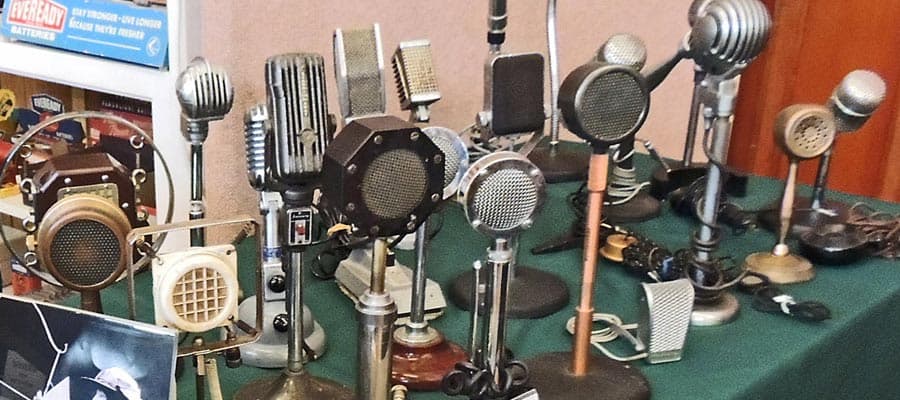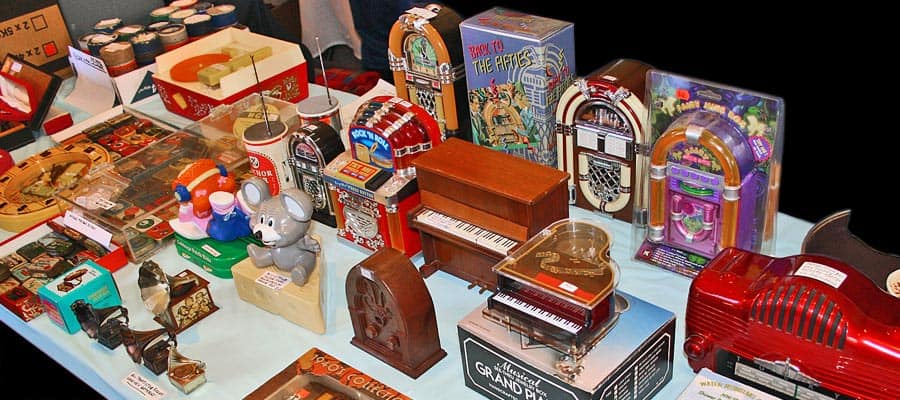We all have memories of our family radios and earlier versions owned by our grandparents. The HRSA has meetings in major areas around Australia, plus activities, like Workshops.
Also every few years, the HRSA assembles a multitude of vintage radios and accessories in a central location, for Australia’s largest Radio Exhibition.

The HRSA is a not-for-profit Society, dedicated to preserving Australia’s Radio history, enabling current and future generations to relive and wonder at the Golden years of Radio.
To put it in perspective, museums typically display about five radios, whereas HRSA members collectively preserve over 30,000 radios!
|

After a very successful event in Melbourne during 2012, Canberra was the host city for RadioFest 2014. It was an unparalleled opportunity to marvel at or purchase most radio-related items from Marconi’s early days through to recent times.

Huge public exhibition
Sunday’s RadioFest sale and exhibition was open to all, with displays and a huge market of every conceivable Radio, parts, books and ephemera.
Collections on display included:
• the magnificent output of Philips Radio at the height of its golden period,
• old telephones,
• early and intriguing transistor radios,
• plus much more.
Society members had access to the main trading hall early on the Sunday, from 8.30am, with the hall then open to the public from 9am to 3pm.
|
 |
Becoming a member is easy and very low cost.
The HRSA encourages people with an interest in vintage radio to join the Society. At just $35 a year, including the quarterly colour magazine, access to circuits and 50,000 valves plus parts and so much more, like monthly meetings and regular auctions, the HRSA has to be the best value.
Yes, that’s not a typo, the Society has over 50,000 valves available for members, in an era when valves are often considered “as scarce as hen’s teeth”.
Click on the HRSA logo (left) for Membership details.
|
Auction
A highlight was the unique member’s-only auction of the Rare, Early and Unusual, featuring masterpieces from the dawn of broadcast radio in the early 1920s.
Superior to any previous Vintage Radio auction, there’s never been anything quite like it, with antique and unusual crystal sets, very early valve radios, spark gap transmitting coils, spectacular horn speakers, everything “top shelf”.

Above: An immaculate 1924 Atwater Kent Breadboard radio, complete with the original A-K horn, literature and superb craftsman-built glass display enclosure. The Auction Catalogue and Photographs of the lots offered at the fest are now available -
|

Above: also in the Auction, was an extremely rare example of AWA's first commercial tunable radios, the 1925 Radiola 4 model C7/60 in a smoker's cabinet.
|
 |
Dinner and guest speaker with early radio enthusiasts
Saturday night’s dinner for members was an amazing opportunity to mix and chat with enthusiastic radio collectors and restorers from all around Australia and even overseas members.
Some members were in the radio business in the 50s, so stories abound. Great food and company was supported by the leading speaker, David Kilby from the ABC.
Well-known for his Rare Collections program (Sunday nights 9.30pm) on Radio National, he was at his funniest, most informal best.
 |
Workshops
Workshops were very popular, demonstrating skills and techniques employed to make silent, poor condition radios resurrected to look and work like new again.
Workshops included:
• Restoration with Stan Snyders, (see Silicon Chip magazine, Feb. 2014, for a fine example of Stan’s restoration),
• Mike Osborne showing a clever fix for dud early triodes in his session titled: 1920s valves in the 21st century,
• Safe Practice in Restoring Mains Radios, with experienced technician John Carr.

Above: Stan Snyders' restored Freed Eismann receiver.
|
Email:

Sponsored by:
 Click on the banner for the Silicon Chip Website
Click on the banner for the Silicon Chip Website
|
















